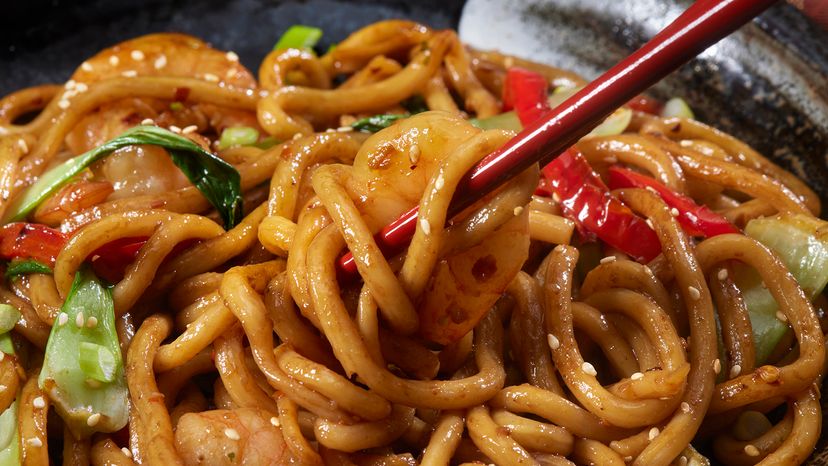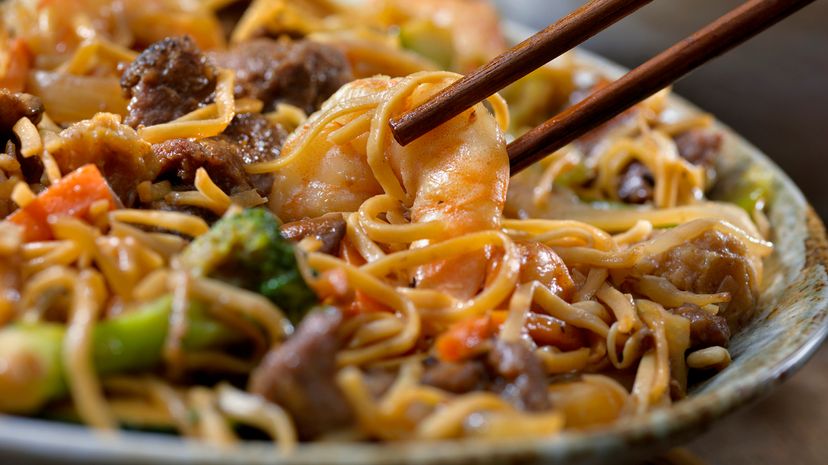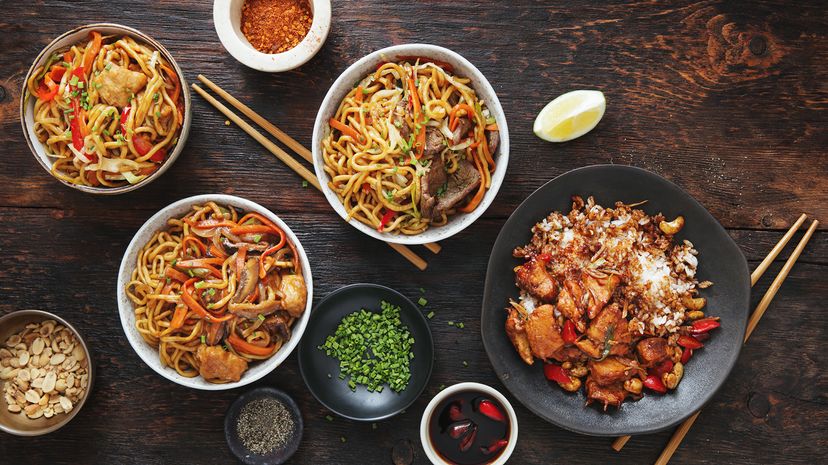While lo mein and chow mein are undoubtedly popular choices in Chinese cuisine, there are many more noodle dishes that have gained popularity inside and outside of China.
From simple stir-fries to elaborate noodle soups, noodles are a staple on Chinese menus, beloved for their comforting taste and satisfying texture. Below are some different types of noodles you might encounter.
1. Fried Noodles
One of the most beloved variations is fried noodles. Chefs cook these noodles until they become crispy, creating a delightful texture contrast. Often, they top them with a stir-fry of meat, vegetables and a savory sauce.
The noodles soak up the flavors while retaining their crunchiness, offering a satisfying dining experience.
2. Stir-fried Noodles
In Chinese cuisine, stir-fried noodles stand as another staple. The chef quickly cooks fresh or dried noodles in a hot wok with a medley of vegetables, meat and sauces.
The high heat of the wok imparts a smoky flavor to the dish while ensuring that it cooks each ingredient to perfection. This cooking method commonly utilizes Chinese egg noodles, which have a springy texture and the ability to absorb flavors well.
3. Noodle Pancake
A unique twist on traditional noodles involves creating a noodle pancake. The chef presses fresh egg noodles into a pancake shape and pan-fries them until they turn golden and crispy. This dish offers a delightful contrast of textures, with a crunchy exterior giving way to soft, tender noodles inside.
4. Tossed Noodles
Chinese restaurants often favor tossed noodles, a dish where noodles undergo boiling until they're fully cooked before chefs toss them with a flavorful sauce. This method ensures an even coating, allowing each strand to absorb the dish's flavors.
Chefs commonly use light sauces, such as a light soy sauce or oyster sauce, to complement the delicate taste of the noodles.
5. Crispy Noodles
Crispy noodles, another crowd-pleaser, involve deep-frying noodles until they turn golden and crunchy. Chefs then top these crispy noodle nests with a stir-fry of meat, vegetables and sauce for a dish with a satisfying crunch to it.
6. Soft Noodles
In contrast to crispy noodles, chefs cook soft noodles in boiling water until they're tender before incorporating them into various dishes. Depending on the recipe, chefs may use wheat flour noodles, egg noodles or rice noodles.
Softer noodles are perfect for soaking up the flavors of rich broths or sauces, making them a popular choice in noodle soups or braised dishes.
We created this article in conjunction with AI technology, then made sure it was fact-checked and edited by a HowStuffWorks editor.


